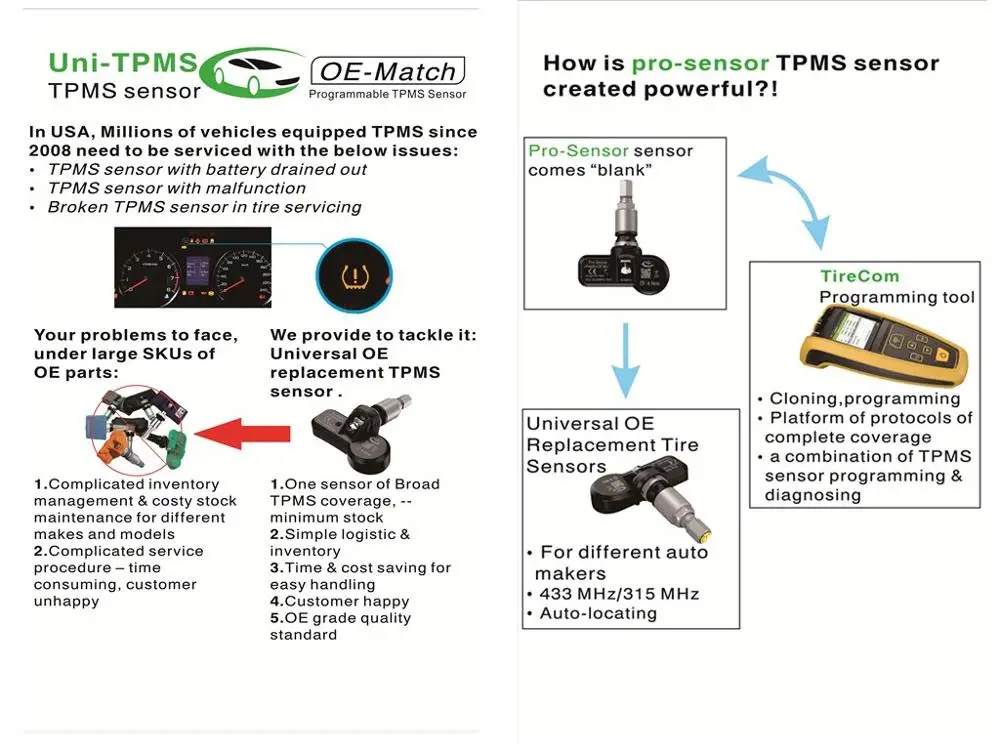Tire Pressure Monitor Systems have been around since the 1990s on older Corvettes and Cadillacs with run-flat tires, and has been mandatory on all passenger cars and light trucks since model year 2008.
TPMS systems are mostly maintenance-free – that is, until a sensor fails and has to be replaced. The little lithium ion button batteries inside TPMS sensors typically last 5 to 10 years, with 7 years being the average for many. Battery life depends on miles driven. The more miles a vehicle racks up every year, the more signals the TPMS sensors broadcast while the vehicle is being driven. The sensor only generates a signal at preset time intervals (30 to 60 seconds or longer) to conserve battery life. Because of this, the sensors in high annual mileage vehicles usually fail before those in vehicles that are driven fewer miles each year.
TPMS sensors can also fail at any time as a result of physical damage or corrosion. Some of the original equipment TPMS sensors on Asian makes have had a severe problem with corrosion of the aluminum stem. After a few years exposure to road salt, corrosion may cause the valve stem to suddenly break off.
The service life of a TPMS sensor battery is roughly equal to that of the tread life of the original equipment tires. A good set of tires should last 60,000 to 80,000 miles, so by the time the vehicle needs new tires it also needs new TPMS sensors – even if the original sensors are still functioning normally.
The reason why TPMS sensors should be replaced when a new set of tires is installed is because the sensors likely won’t last until the next tire replacement. They might go another year or two, or they might not. But it is highly unlikely they will last another 5 to 7 years.
A TPMS sensor also may need to be replaced if it is damaged while dismounting or mounting a tire on a rim. If a sensor is removed from a wheel temporarily for tire service, or installed in a different rim, and it is a clamp-on style sensor with a hex nut and grommets at the base, a new nut and grommets must be used to reduce the risk of air leaks. Service kits are available for this purpose that contain new grommets, hex nuts, valve cores and caps.
Service kits are available for this purpose that contain new grommets, hex nuts, valve cores and caps.
When TPMS was initially introduced by the vehicle manufacturers, they did their best to really complicate things for the aftermarket with a proliferation of different sensor designs and types. In recent years, aftermarket suppliers have overcome this issue with various “universal” sensors that fit a wide variety of applications. This greatly reduces the number of SKUs needed to cover the market, and it simplified replacement for installers.
Although some TPMS systems can self-learn the position of the individual wheel sensors, many have to be programmed with a special TPMS tool after sensors have been replaced so the TPMS control module will know which wheel sensor is which. This is essential on vehicles that actually display individual tire pressure readings on the instrument panel. On vehicles that only give a general low tire pressure warning (no individual tire pressure readings or positions), sensor locations usually don’t matter. The driver will have to figure that out which tire is low by checking each tire with a pressure gauge.
The driver will have to figure that out which tire is low by checking each tire with a pressure gauge.
Snap-in TPMS sensors that have a rubber stem are as easy to replace as any conventional valve stem. No special tools are needed. But hex nut stems do have to be carefully tightened to specific value with an accurate inch-pound torque wrench or TPMS valve stem tool.
In this article:Tech Topics
What's In This Guide?
It takes less than one hour to change all four TPMS modules if you take your car to a credible tire shop. This means that the costs of TPMS replacements include a minimal labor fee in addition to the componentry that tends to cost somewhere in the neighborhood of $30-$50.
This means that the costs of TPMS replacements include a minimal labor fee in addition to the componentry that tends to cost somewhere in the neighborhood of $30-$50.
Added up, it should cost you between $70-$150 per wheel. Granted, this also depends on the make and model year of your vehicle and the availability of parts. You may be able to replace a single sensor, but if the remaining three sensors are more than 10 years old, you should replace them all at once.
A TPMS (Tire pressure sensor) is an intricate piece of engineering designed to constantly monitor the air pressure within the tire. Most tire pressure monitoring sensors are designed to detect when the tire air pressure falls below a certain threshold and then alert the driver via a dashboard warning light.
These sensors are placed inside the tire and are commonly being powered by a small battery. Back in 2000, the US government made the use of TPMS a legal requirement for all cars sold past the year 2000. This means that all cars nowadays come with tire pressure monitoring sensors as they are an essential aspect of on-road safety.
This means that all cars nowadays come with tire pressure monitoring sensors as they are an essential aspect of on-road safety.
Poorly inflated tires are unable to properly support a car’s weight, they increase your braking distances and make the car less maneuvrable, especially at high speeds. According to a prominent TPMS manufacturer Schrader, more than a quarter of a million accidents are being caused by under-inflated tires each year.
Back in the early 2000s, NHTSA stated that tire-inflation-related issues cause more than 10,000 injuries each year, so it’s rather obvious why we need functioning tire pressure monitoring sensors. These sensors tirelessly monitor the air pressure within the tire while also communicating with the car’s ECU through low-frequency radio waves.
Whenever the system deems the air pressure is way too low, you will be alerted which means that you will either adjust your driving style accordingly or completely pull over. These sensors also ensure that you always use the correct amount of fuel because under-inflated tires also use more fuel due to increased levels of tire rolling resistance.
These sensors also ensure that you always use the correct amount of fuel because under-inflated tires also use more fuel due to increased levels of tire rolling resistance.
Driving without a tire pressure monitoring system is certainly a risky thing to do, especially if you often drive at higher speeds. As these sensors tend to wear out, they need to be replaced in due time. However, most people out there use their cars for daily driving purposes and it’s not always easy to cancel everything and take your car in for a service.
If you are in a pinch, you can drive the car even without a tire pressure monitoring sensor. However, always keep a sentient eye on your tires and be sure to adjust your driving style accordingly. If you are positive that your tires are properly inflated, you may be able to drive the car and nothing should ever come of it.
Nonetheless, if you are not in a hurry and you can take your car in for a TPMS replacement, be sure to do so at your earliest convenience.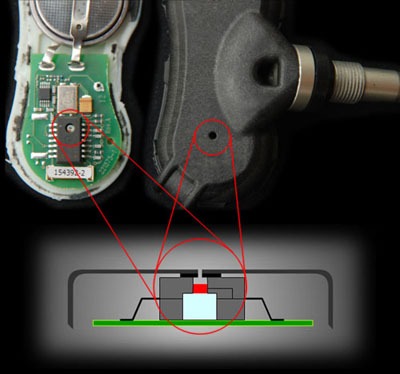 While driving without a tire pressure monitoring sensor, be sure to read this article if you want to find out how you can tell if your tires are too low while behind the wheel.
While driving without a tire pressure monitoring sensor, be sure to read this article if you want to find out how you can tell if your tires are too low while behind the wheel.
Most TPMS’s tend to last about 5-10 years, but given the fact that they are not the easiest nor the cheapest components to replace, most people tend to swap them whenever it’s necessary. This means that they tend to replace them only when the battery dies or when other TPMS components fail.
A TPMS fix is only possible if the reason why it failed in the first place can be resolved without needing to replace the whole unit. There were instances where owners complained about their brand-new tire pressure monitoring sensors failing only after a year or two of use.
A common reason why is if the sensor was damaged beforehand, it used a faulty battery, or because it came with a manufacturing defect. Sometimes a brand new battery can replenish your old sensor and give it a brand new life, but you should not use the same sensor for more than 10 years max.
Sometimes a brand new battery can replenish your old sensor and give it a brand new life, but you should not use the same sensor for more than 10 years max.
This can be caused by either a faulty sensor, a slow puncture, swift ambient temperature shifts, recent tire replacement, or because your wheel speed sensors are malfunctioning. These sensors are not designed to last a long time and the reality of it is that you are eventually going to experience some form of issues with them.
If your tire pressure monitoring sensor light stays on, but you are 100% positive that your tires are absolutely fine, the best thing you can do is to replace the sensor. Indeed, you can also repair it in some instances, but the price differences between repairing them and replacing them are marginal, so it’s always better to just get a brand new one.
Most tire shops out there are going to charge you anywhere between $70 to $150 for a TPMS replacement per single wheel.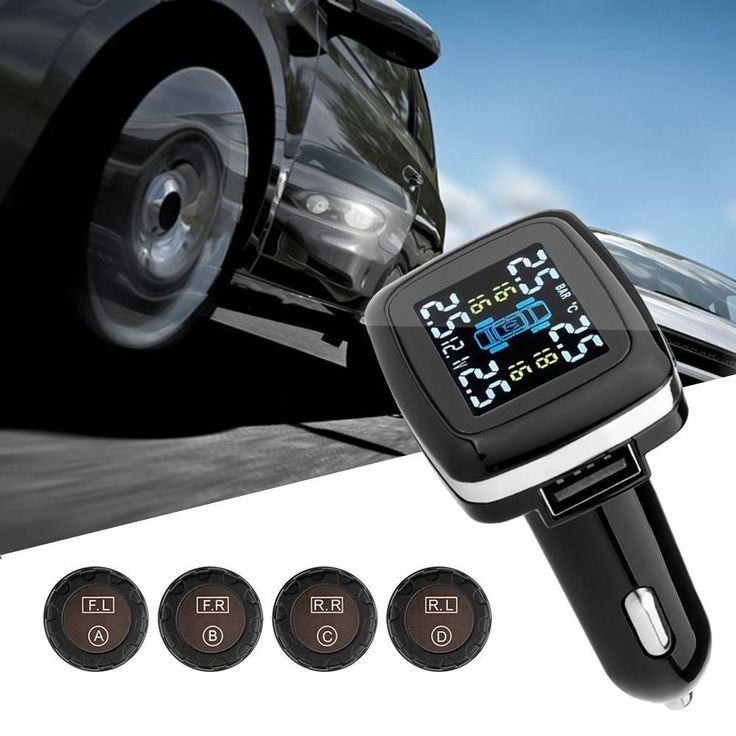 This is because the components such as batteries, sensors housings, and chips tend to cost somewhere around $30-50 while the labor costs can cost up to $100.
This is because the components such as batteries, sensors housings, and chips tend to cost somewhere around $30-50 while the labor costs can cost up to $100.
It also depends on which type of car you are driving, the type of TPMS, and the availability of parts. If your sensors are already more than 10 years old, it’s always better to replace them all rather than one by one, even if the remaining three are not showing any signs of old age.
24
May
The vehicle pressure sensor is an important element of the TPMS (Tire Pressure Monitoring System). This is the so-called direct pressure monitoring system, often used in trucks and special vehicles.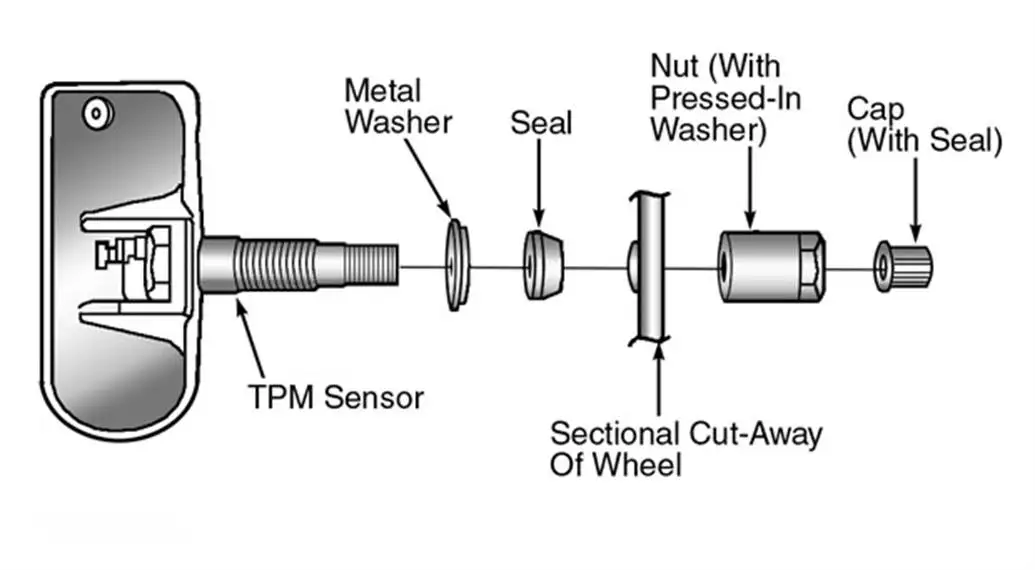 What are the sensors, consider the example of the popular INCAR TPMS tire pressure sensor system.
What are the sensors, consider the example of the popular INCAR TPMS tire pressure sensor system.
Common Elements
Each pressure monitor contains a lithium-ion battery to power the device's electronics: transmitting antenna and auxiliary temperature and vibration control circuits, as well as sometimes voltage that makes the equipment unnecessarily expensive.
The voltage monitoring circuit, as its name implies, monitors the output voltage of the battery and, if it drops critically, signals the need to replace the battery. In this matter, by the way, the INCAR TPMS system differs from all similar systems - batteries can be replaced, while analogues require a complete replacement of the pressure sensor, regardless of its serviceability. The lack of voltage control does not worsen the system as a whole - at some point, the driver simply stops receiving information "from the field", which means that the pressure sensor has no power supply, and an alarm is automatically initiated.
Speed (vibration) control circuit, which does not require power supply, is designed to activate the pressure sensor. After the car starts moving, once a minute, a wave packet with the sensor identifier and the tire pressure value is broadcast on the air at a radio frequency of 433 MHz (if the pressure deviates from the programmed standard, the broadcast frequency decreases to 15 s). Therefore, while the car is parked, battery power is not consumed.
Auxiliary temperature circuit, if present, performs pressure conversion according to Charles's law: "pressure of a gas of a fixed mass and volume is directly proportional to the absolute temperature of the gas".
Sensor modifications
Tire pressure sensors are installed both outside and inside the wheel. Consider the typology of tire pressure sensors, their differences and common properties. In our short video, you will learn which sensors are used in the INCAR TPMS monitoring system, where to put the tire pressure sensor and what are the differences between them, as well as in what operating conditions they are best used.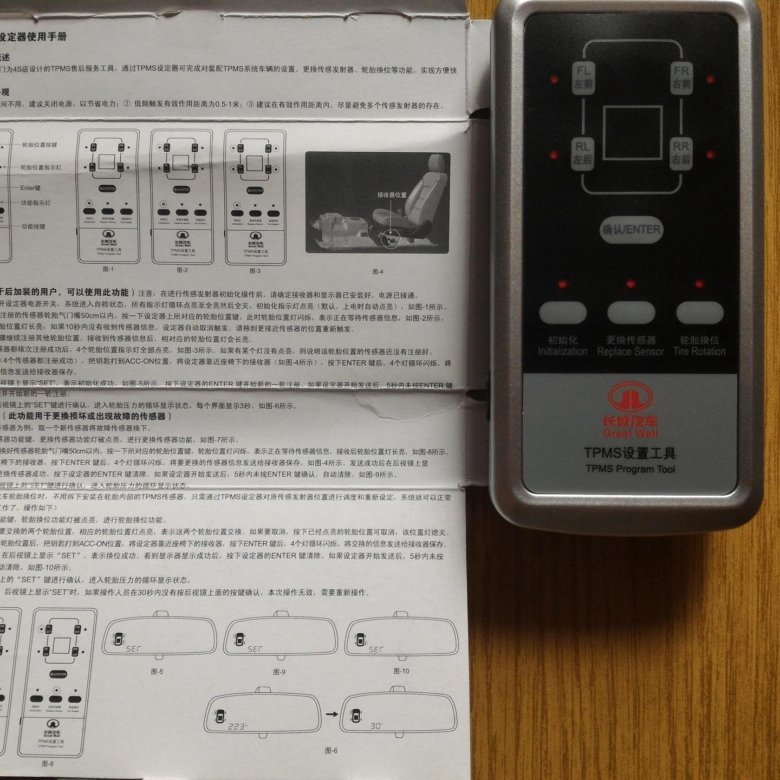 Note that all models in the INCAR TPMS line have an optimal design, which includes, in addition to the pressure analyzer and antenna, both temperature and velocity (vibration) circuits.
Note that all models in the INCAR TPMS line have an optimal design, which includes, in addition to the pressure analyzer and antenna, both temperature and velocity (vibration) circuits.
Tags :2 min. reading
What is a TPMS sensor?
The TPMS sensor is a device attached to the valve stem located on the wheel. The functions of the TPMS sensor are: 1. Hold air in the wheel/tire assembly, 2. Measure air pressure, and 3. Transmit data over the air.
What is a universal TPMS sensor?
Generic sensors are non original equipment (OE) TPMS sensors used in the replacement market. Programmable sensors and multi-protocol sensors are considered universal sensors.
What is the difference between a programmable sensor and a multiprotocol sensor?
Programmable sensors must be programmed using the TPMS Tool according to the specifications of the vehicle in which they are installed.
After recording, most programmable sensors provide the same information as original equipment sensors. Multi-protocol sensors have several specific protocols pre-loaded into the sensor.
In other words, they are designed for passenger cars of different makes, models and years of production from different manufacturers. Typically, these sensors do not require programming, but also require several different part numbers.
How do I know if the sensor battery is dead?
In most cases you won't do this unless the warning light flashes intermittently for 60-90 seconds, but you still need to retrieve the codes and check the sensor. It is best to take the car to an authorized service center for testing, for example, to the service of our company “80 wheels”.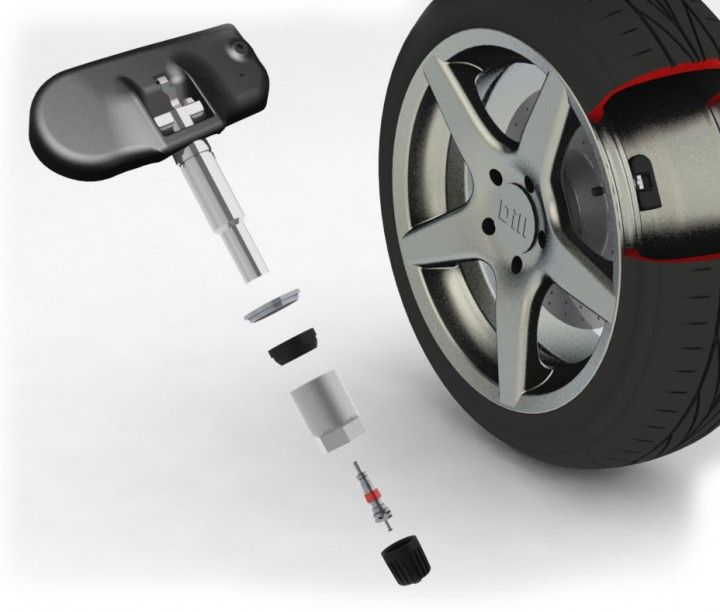
I just changed the wheels/swapped. Do I need to do something on my TPMS system?
80wheels recommends retraining sensors after swapping wheels. This way the TPMS system knows the exact location of each sensor/wheel.
What are the advantages of tire pressure monitoring systems?
Tire pressure monitoring systems or TPMS provide real safety and economic benefits for car owners.
By helping drivers keep their tires properly inflated, TPMS can help improve ride and handling, reduce stopping distances and reduce the chance of hydroplaning.
TPMS can also reduce fuel consumption and extend tire life.
The TPMS is designed to monitor tire pressure and send an alert to the vehicle's on-board monitoring system when the pressure falls below a predetermined limit.
Can't I tell if my tires are flat just by looking at them?
You can't always tell if a tire is under-inflated just by looking at it.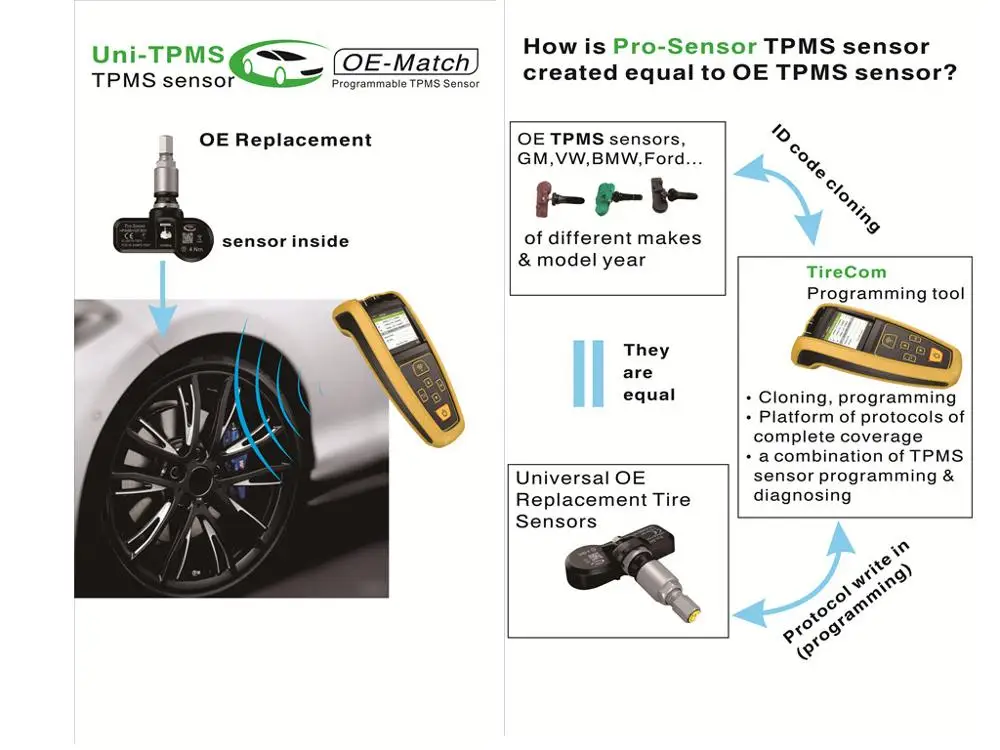 You cannot easily tell if a tire is under-inflated by kicking or pressing on it.
You cannot easily tell if a tire is under-inflated by kicking or pressing on it.
The only way to accurately check tire pressure is to use a quality pressure gauge. A tire can lose air pressure, but it doesn't look like it's under-inflated.
The visual difference between a properly inflated and an under-inflated tire is very small.
I have a Honda CRV and was told I don't have TPMS sensors but I do have a TPMS warning light.
Some vehicle manufacturers have chosen to use an indirect TPMS system that uses algorithms that use anti-lock brake sensors and other systems to measure wheel rotation.
Wheels spinning faster than others indicate lower tire pressure and trigger a TPMS warning.
How long should my TPMS sensors last?
TPMS sensor life will vary depending on several factors including temperature (cold can shorten sensor life, as well as excessive humidity), garage or outdoor parking, daily mileage, maintenance of the TPMS sensor.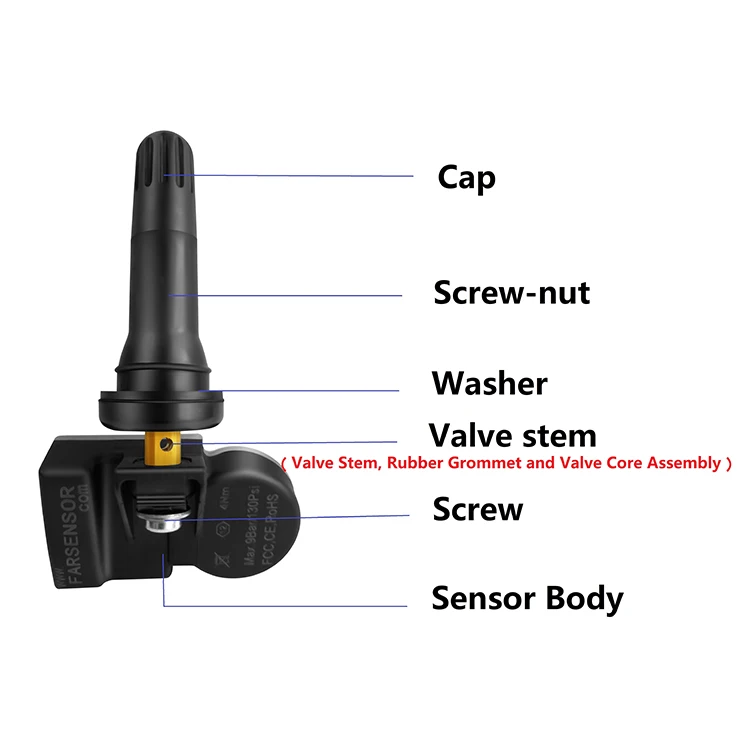
You can typically expect a sensor to last between 7 and 12 years before it fails under typical driving conditions.
How soon after the TPMS light comes on should I check my tire pressure?
You should stop as soon as possible to check and make sure all your tires are in good condition. Driving at extremely low tire pressure can result in an accident or damage to the rubber and rim.
If the tires seem to be deflating, find a service center that can check the air pressure when possible.
Can the TPMS sensor battery be replaced?
No. The battery in the sensor cannot be replaced. The case is sealed to protect the internal components, including the battery, in the harsh conditions inside the tire.
Why does my car have a tire pressure monitoring system (TPMS)?
Starting with model year 2008, some departments of transportation require the installation of a tire pressure monitoring system on all new passenger cars, multi-purpose cars, trucks and buses weighing up to 4500 kg (excluding vehicles with twin wheels on axles).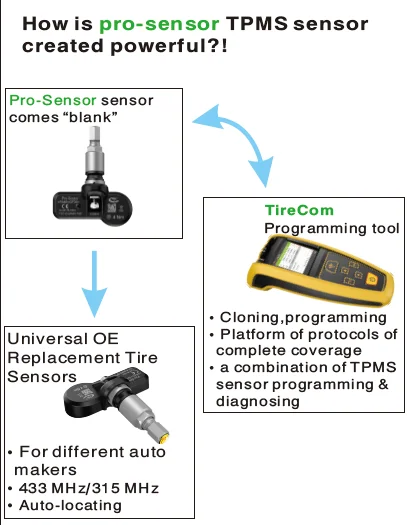
A law requiring TPMS sensors was passed in response to rollover deaths caused in part by vehicles with under-inflated tires.
What does it mean if the TPMS warning light starts flashing and then goes off after a minute or more?
A flashing TPMS warning light (looks like a horseshoe) or illuminated letters TPMS indicate a TPMS failure.
This means that the system is not working properly and needs to be diagnosed by a workshop.
This may be a faulty sensor(s), or another component in the system, or an inability to reprogram the vehicle's sensor IDs properly.
What does it mean when a store tells me they have to write IDs into the computer?
Each TPMS sensor has a unique ID number so the vehicle's TPMS controller can locate that ID and the wheel.
Identification numbers are written using the Relearn procedure to the TPMS controller.
This allows a trained technician to test the location of the failed sensor(s) and the equipment can show the correct air pressure based on the location.
Most retraining requires a properly formatted TPMS tool.
Why am I charged for TPMS retraining when I change tire positions?
Rotating wheels and tires or changing tires moves the TPMS sensors to a different location on the vehicle.
Repair technicians must perform a function known as vehicle retraining. The specialist will use equipment, a TPMS scan tool or tool to complete this task.
This task requires training, equipment and time, which is why many tire retailers and car service providers charge for services.
Why should I make sure my TPMS is working properly?
Low tire pressure is one of the main causes: Air leaks leading to an accident resulting in death/injury Excessive tire wear Poor handling Reduced fuel efficiency Decreased effectiveness of vehicle stability control system.
Why does the TPMS light stay on?
Typically, this means the wheel is in a low pressure condition, at least 25% below the pressure indicated on the driver's door pillar decal.